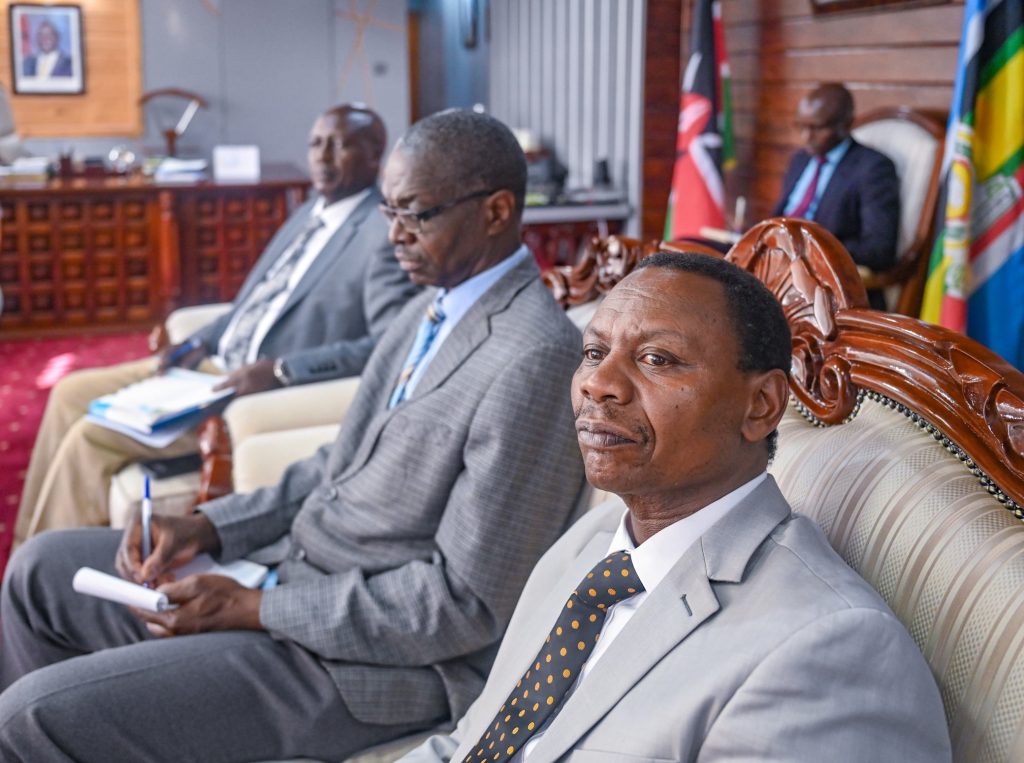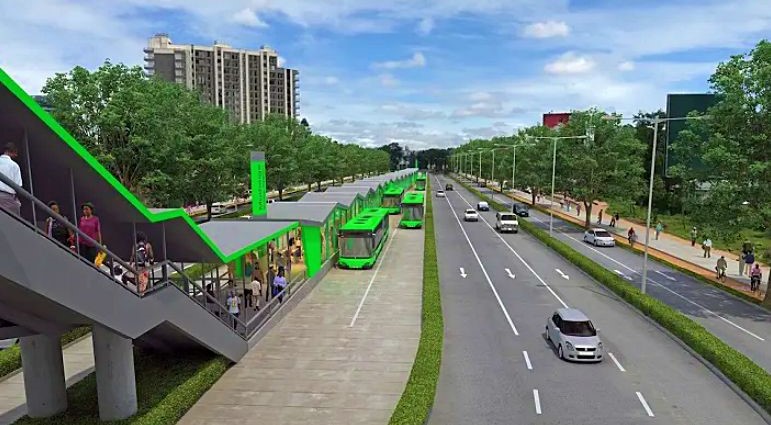A scathing report by the Auditor General has exposed the sorry state of Nairobi’s Bus Rapid Transit (BRT) Line 5, once hailed as a flagship project that would transform transport in the city. Today, that promise lies abandoned along the dusty stretch of Outer Ring Road.
While some blame the Government of the Republic of Korea for failing to release committed funds, the harsh reality is closer to home. The collapse of BRT Line 5 stems largely from poor leadership and mismanagement. At the centre of this failure are two key figures: Eng. Silas Kinoti, Director General of the Kenya Urban Roads Authority (KURA), and Eng. Peter Gitau, a former KURA official now in the State Department of Roads with ties to NaMATA.

Originally envisioned as a 20.18-kilometre transit corridor to ease Nairobi’s chronic traffic congestion, BRT Line 5 was backed by a concessional loan of US$59 million (around Kshs 6.5 billion) from Korea’s Export-Import Bank. The Government of Kenya was to provide additional funding. The plan included dedicated bus lanes, stations, terminals, and depots.
But as of mid-2024, less than 5% of the donor funds had been released. The Government of Kenya’s contribution was a mere Kshs 26,169. That leaves a gaping funding hole of Kshs 6.2 billion. No meaningful work has started. KURA, under Kinoti, was responsible for implementing the project. Yet there’s been no visible progress. The official explanation is “low absorption and delayed donor funds.” But that only scratches the surface.
An experienced infrastructure leader should anticipate funding delays and have fallback plans in place. Where was the risk management? The stakeholder engagement? The groundwork that should have kept the project moving? Instead of taking decisive action, Kinoti let critical deadlines pass, allowing momentum to stall. In public service, leadership means adapting under pressure, but we’ve seen bureaucratic inertia instead. Kenya deserves better.

Eng. Peter Gitau, too, cannot escape blame. Though now in the State Department of Roads, he was a key figure at KURA and a vocal supporter of the BRT project. But when action was required, Gitau was noticeably absent. His role was critical. As someone deeply involved in designating the Outer Ring Road as a BRT corridor, he was in a prime position to coordinate across agencies. Yet the project has faced persistent challenges, slow contractor mobilization, weak inter-agency collaboration, and logistical setbacks, all within his sphere of influence at KURA and his current role.
Some argue that Gitau wasn’t the final decision-maker on budgets or contracts. But leadership is more than signatures. Oversight without urgency is a dereliction of duty. Influence without results is a failure.
The BRT Line 5 project, involving multiple agencies, has become a game of finger-pointing. KURA blames the Korean government. NaMATA blames KURA. The Ministry of Transport says its hands are tied. Meanwhile, Nairobi’s residents remain stuck in traffic, breathing in toxic exhaust.
This diffusion of responsibility has only shielded those who were supposed to lead. Both Kinoti and Gitau had the power and visibility to drive action, resolve bottlenecks, and keep the project on track. Instead, they stood by as the project unravelled.
Kenya has seen many grand infrastructure dreams go awry. But what makes the BRT Line 5 fiasco especially frustrating is how little has been achieved, despite the project being halfway through its planned timeline. The idea that it could be completed by December 2025 now seems laughable.
Worse still, the costs are mounting: lost time, wasted funds, eroded public trust, and worsening traffic congestion for millions of commuters.
Yes, the Korean government’s delays are part of the problem. But true accountability starts at home. If Kinoti and Gitau had acted decisively, they could have recalibrated the plan, lobbied for alternatives, or found interim solutions. Instead, they remained passive as the project collapsed.
They must be held accountable, not just for what they didn’t do, but for what they allowed to collapse through inaction. Nairobi’s transport future is too important to be left in the hands of leaders who confuse press conferences with progress.




